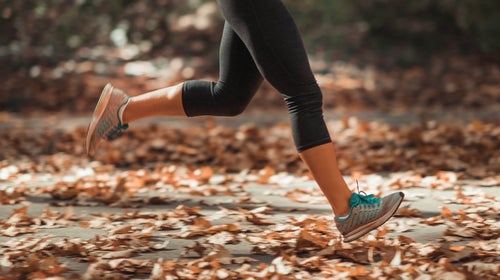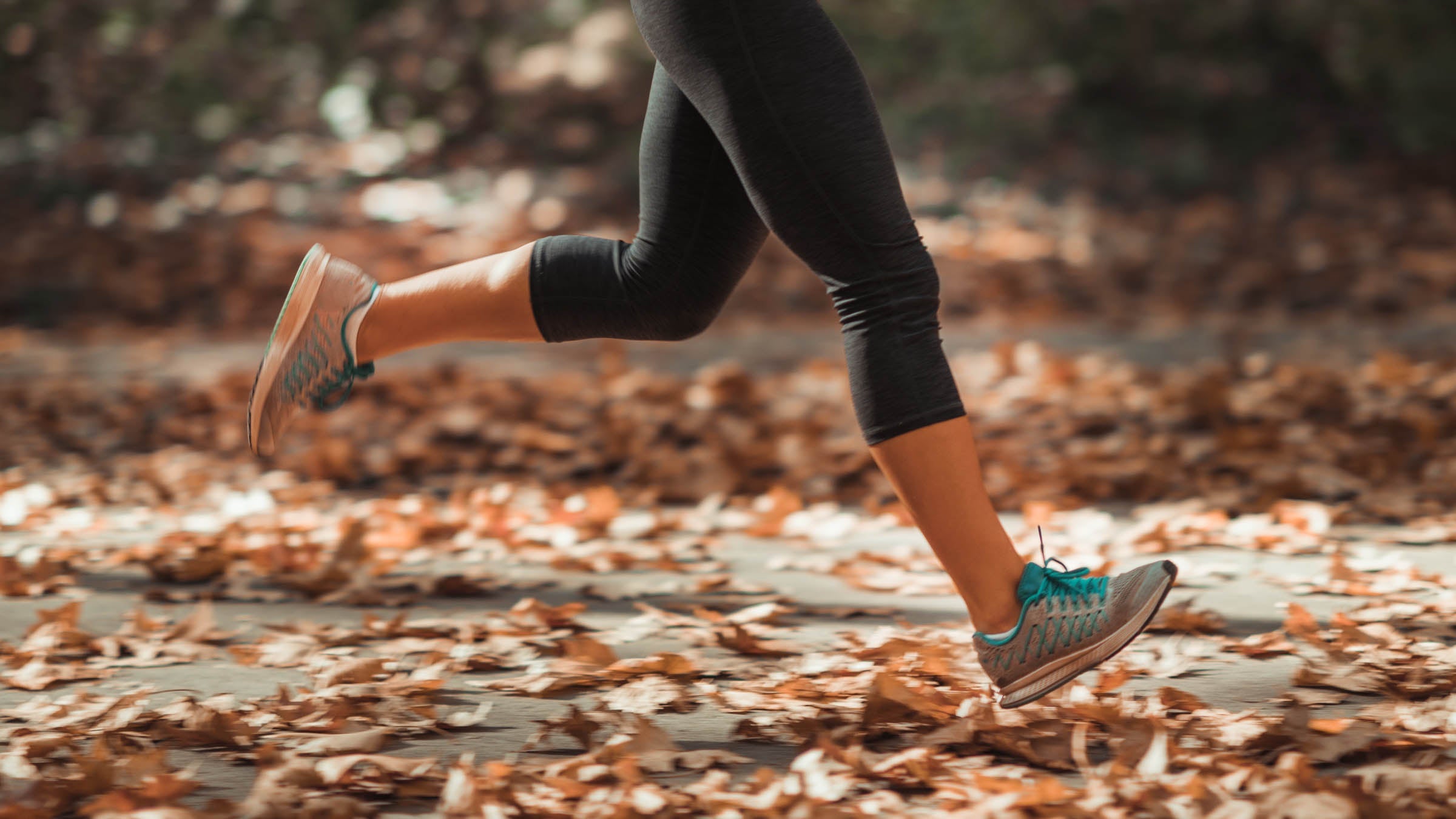At age 50, I have recently begun to wonder how my body will hold up for running (and life) over the long haul given that in the last decade, I have dealt with several lingering bouts of Achilles tendinitis, a painful stint of iliotibial (IT) band syndrome, a functional leg-length imbalance that led to an angry case of sciatica, a debilitating case of runner’s knee, one frustrating case of shin splints, and an excruciating ruptured Achilles. Not all of those injuries were caused by running, but each one presented itself when I ran.
This has led me to think a lot more about the shoes I choose to wear and the marketing promises that accompany them. Can they really help me run longer, healthier, and injury-free? Conversely, might they be causing my problems?
Despite the continued evolution of running shoes since the 1970s, the rate of injury among runners has remained high and, depending on which report you read, might even be climbing. Reports of annual injury rates vary widely, from 20 percent to 92 percent, but the average rate is somewhere around 50 to 60 percent. That means more than half of the running population gets dinged up in some fashion every year. Imagine that as every other runner in your local running group, or fully half of the 50,000 participants who line up to start the New York City Marathon every November.
It’s a startling injury rate. Might shoes be the culprit? Absolutely not, says , who authored .
Dicharry has published numerous research studies about running mechanics, and he insists that running shoes don’t cause injuries. “There are better and worse shoes for an individual runner based on their gait characteristics, but running shoes are not the cause of injuries,” he says.
There has never been a correlative link between injuries and running shoes, he points out, which sounds like a convincing exoneration of shoes from where I sit, though it’s important to note that there also haven’t been many studies. In fact, in the only study that has remotely produced some interaction between running shoes and injury rates, 81 female runners were categorized by foot type (neutral, pronated, highly pronated) and randomly assigned neutral, stability, or motion-control shoes.
After basic information about their gaits was recorded, the runners were put through a 13-week half-marathon training program. Of the 194 training days missed by the test subjects due to pain or ailments, 79 were missed by runners wearing motion-control shoes, followed by 64 by neutral-shod runners, and 51 by stability-shoe wearers.
The neutral runners reported greater pain values while running in neutral shoes than in stability shoes; runners with pronated gaits reported greater pain values while running in stability shoes than in neutral shoes. No significant effects were reported for runners with highly pronated gaits. Ultimately, the study concluded that the “current approach of prescribing in-shoe pronation control systems on the basis of foot type is overly simplistic and potentially injurious.” But the researchers admitted that the study was too small and didn’t take into account enough factors to be conclusive.
Even with the advancements in kinesiology; the study of biomechanics, the human body, and materials science; and massive investment and vested interest from shoe companies, relatively little is known about how shoes actually impact our ability to run, no matter whether it is 100 meters, 100 miles, or somewhere in between.
There is no universal understanding of or agreement on how shoes should be designed and built to improve efficiency, maximize energy return, and reduce the risk of overuse injuries that, some research shows, may be caused by the repetitive motions of a running gait.
The Pronation Effect
In the 1970s, there was tremendous focus on stability and motion control. Despite the fact that at the time, there was little science related to human running mechanics, brands became obsessed with the notion that pronation could be harmful to a runner’s heath.
Although high-speed video cameras and force-plate treadmills weren’t yet available to analyze running gait, biomechanists, podiatrists, coaches, and shoe developers pointed to this inward rolling as one of the causes of common running injuries. As a result, the shoe war encountered a brand-new battlefield, one concerned with how to control the movement of a runner’s feet—an idea that, although never grounded in science, has lingered into today. Science or no science, it has been a powerful marketing and sales tool.
In 1977, Brooks introduced several shoe models that supported the interior side of the heel with its Varus Wedge. The firm foam piece was engineered to provide greater stability, increase heel and foot protection, and improve running efficiency while decreasing muscle and tendon fatigue.
The Brooks Vantage was the first shoe designed to control the inward rotation of the foot, a motion that would soon be known by the industry-wide catchphrase “overpronation.” Under the guidance of renowned podiatrist Steven Subotnick, who would later author Cures for Common Running Injuries, Brooks attempted to counter the rolling of the foot toward the medial side with a wedge that not-so-subtly canted the foot outward to the lateral side.
Brooks’s innovation sparked dozens of imitators and eventually led to a whole new category of shoes based around stability and motion control. But it also led the industry down a misdirected path of self-help without compelling scientific evidence or quantifiable results. Soon every brand had its own feature designed to restrict overpronation—the most common being the medial post, a firmer-density midsole foam located under the arch of the foot. Worse yet, it also prompted the unsavory practice of brands hiring scientists and paying for the lab results they needed for their marketing programs that supported their new shoe models.
While innovation can be good—and even imperative at times—the problem was that a lot of the innovation was being fueled not by science but rather by marketing hype and copycat imitation, neither of which necessarily led to better performance or more efficient running, even if they decidedly did lead to selling more shoes and developing a vernacular to support three types of shoes (neutral, stability, and motion control). Worse, the new trend didn’t reduce a growing epidemic among recreational runners: overuse injuries such as shin splits, Achilles tendinitis, plantar fasciitis, patellar tendinitis, and runner’s knee.
Dicharry doesn’t think shoe brands are really listening to what science—specifically kinesiology and anatomy—is telling them.
“For a long time, the running shoe industry has had a bias that suggests a running shoe has to stop parts of your body from moving and force something to move in a different way,” he says. “That’s based on unfounded ideas that evolved 40 or 50 years ago. Science shows that doesn’t exist and never did. People are variable and move differently, and that’s OK.”
Dicharry says that until brands stop trying to control or limit movement, shoes will never fully move forward. “The foot is an adaptively controlled lever; it’s not just one rigid thing that moves one way. It’s all about adapting and conforming.” His insights beg the question: If every runner has his or her own preferred path of movement based on specific anatomical variances and irregularities, is it even possible to mass-produce a commercial product that will actually improve performance and reduce injury risk for a wide range of runners?
Dicharry insists that it is possible, but “you would mostly have to scrap the model of how shoes are built and marketed.” There is sufficient technology and understanding of how to do it, he says; however, mass production and an entire recategorization of running shoes are still significant inhibitors.
Until that happens—if indeed it ever does, at least for a wide audience— the biggest challenge facing running shoes may be that they’re not keeping runners from being injured. Despite numerous advancements in outsole rubber, midsole foam, training philosophies, and understanding of how the body moves, there has yet to be a shoe that has shown the ability to reduce injuries. The incidence rate of common running injuries has remained constant since they began being monitored, with most surveys and studies showing an average of 50 to 60 percent of runners being injured every year.
An essential piece of the puzzle cannot be ignored: Running shoes are a commodity, and every running shoe company is in the business of designing and manufacturing shoes for the sake of selling as many as possible. The A-goal is not improving performance or reducing injuries—and perhaps with good, or at least justified, reasoning. Because while running shoes have both functional and aesthetic cues—along with loads of marketing hype—consumer purchasing surveys have shown that the color or aesthetics of a shoe often influences a runner’s purchasing decision more than its perceived ability to help that individual run better.
Ultimately, it’s not in the best interest of a shoe brand to really hone a message about training better, becoming stronger, and fixing one’s mechanics because that proves that it’s not about the shoes, or at least makes shoes a secondary factor in healthy running. Plus, it’s too risky for a running shoe brand to make a claim even remotely suggesting that its running shoes can reduce the chance for injuries. Instead, it is in every brand’s financial interest to make shoes that look good and feel good and come with a good marketing story.
Form & Fitness
When it comes to running’s extraordinarily high annual injury rate, many people want to blame their shoes, but that’s like blaming the tires on your car when the engine won’t start, insists Reed Ferber, PhD, the founder and director of the at the University of Calgary.
“Running shoes are definitely not the cause of injuries,” he says, echoing Dicharry. “Shoes are a small piece of the puzzle that people have focused on as being the cause or salvation of running injuries, but that’s just not the case.”
Ferber says that the one thing the running research community agrees on is that the most common running injuries, especially those suffered by recreational runners, are caused by doing too much, too fast, too soon. In other words, overuse injuries such as shin splits, Achilles tendinitis, runner’s knee, IT band syndrome, plantar fasciitis, and many types of stress fractures are caused by user error: running too many miles or running too hard during workouts without adequate aerobic fitness, leg and foot strength, or flexibility.
When it comes down to it, most recreational runners aren’t nearly as aerobically fit or as functionally strong as they could be. “Not even close,” says Mark Plaatjes, a Boulder, Colorado–based physical therapist, coach, and owner of , a running specialty store. The former world-class runner—and 1993 world champion in the marathon—points to the stark difference between how elite runners train and how the average runner trains.
Not only are elites leaner and stronger, he says, but they’re also running higher-mileage weeks—thus becoming much more aerobically fit and efficient—and dedicating equal hours every week to strength training, form drills, therapeutic work, and recovery. The majority of recreational runners don’t have the time or interest to do those things, he says, and they often pay the price through the resulting overuse injuries.
Plaatjes points out that this lack of comprehensive training is also the reason that the minimalist shoe revolution was a disaster for many people. The shoes weren’t the problem, he insists. In fact, there were merits to the idea that minimally constructed shoes would help build foot strength and cue better running form. The trouble was that few people were willing to take the time to ease into wearing those kinds of shoes and do the considerable amount of work it would take to prepare their bodies to adapt.
While minimalist shoes weren’t to blame for injuries, the movement simultaneously proved that running shoes couldn’t prevent injuries, either. Yes, running shoes can be a tool to improve your running, but the most vivid takeaway from the minimalist revolution was the reminder that most runners need an ample amount of cushioning and protection between foot and ground, and that good running form (and the proper strength, posture, and flexibility that go with it), not newfangled running shoes, is the key to healthy, efficient running.
Doing core strength work, drills, and plyometric exercises can give you a general boost toward running better, more efficiently, and maybe even faster. But the only way to create a specific program for improving as a runner is to gain a detailed understanding of how the individual body operates as it runs—how it moves, where it is strong, where it is weak, where it is asymmetrical. These mechanics can be revealed through a high-tech gait analysis.
At his lab in Bend, Oregon, Dicharry uses state-of-the-art force-plate instrumented treadmills and high-speed cameras to analyze a runner’s gait data in real time. He routinely tests fit and functionally strong runners who move efficiently and stabilize their body effectively but have a specific gait aspect that needs improvement. It might be subpar cadence, poor running posture, or a propensity to overstride. Postanalysis, Dicharry and his team of physical therapists and coaches provide exercises and drills to help cue improvement in those areas.
“Some issues have nothing to do with running,” Dicharry says. “They might be lifestyle problems developed from everyday life, but they show up in running or other things you might do, whether it’s walking or riding a bike or swimming.”
The Shoe Factor
Generally speaking, Dicharry believes most runners can benefit from running in “less” shoe, especially models that don’t inhibit the natural motion of a foot. But he cautions against making big changes—to a more minimally designed shoe or a shoe with a lower heel-toe offset—too quickly.
However, he points out, running in a variety of different kinds of shoes on a weekly basis is the best scenario for a runner, and there is science to back up that statement. A 2013 study conducted in Luxembourg showed that recreational runners who rotated among multiple models of shoes during a 22-week study had a 39 percent lower risk of running injury than those who almost always ran in the same shoes.
“Having a quiver of shoes exposes your body to different ways of interacting with running surfaces, different muscular responses, and different neurological reaction timings,” Dicharry says. “Variability is a good thing, so switching up your running shoes several times a week is a very good thing.”
Like Plaatjes, Ferber believes most runners can make headway by improving their overall fitness and functional strength to become less injury prone, but he doesn’t necessarily believe in overhauling a runner’s gait. Plaatjes, in contrast, is concerned about the industry-wide shift and strongly disagrees that most runners should be running in soft, flexible neutral shoes, insisting that many runners still need some support and stability, especially as they become fatigued during longer runs. The best way to provide that support, he says, is via stability shoes or after-market insoles.
“The answer to reducing injuries, enhancing comfort, and improving performance is not to change or fix a runner’s ‘flaws’ but to work with the natural and highly individual motion paths of the joints,” says Carson Caprara, senior director of global footwear product management at Brooks. “The focus then becomes keeping a runner in this path of least resistance for as long as possible during a run. For some runners, the variables of shoe geometries, midsole hardness, or excessive stabilizing technologies can push them outside of their preferred motion path. The task of modern running shoes should be to help these runners stay within their unique motion corridor at all times.”
Brooks outlined a holistic approach to designing and fitting running shoes that would optimize efficiency, reduce injury, and enhance comfort. Instead of breaking down its shoes into neutral, stability, and motion-control categories that took into consideration one factor—the level of pronation at the ankle—it came up with new categories based on four biomechanical silos related to cushioning, energizing, connecting, and propelling a runner’s experience. And it acknowledged that the individual’s preference had a lot to do with what shoe would be best for that person. The brand concluded that shoes allowing runners to run in their natural preferred state on the path of least resistance, rather than attempting to correct perceived problems or deficiencies, would provide the best experience and be the most comfortable. Brooks became the first brand to ditch medial posts to control overpronation in favor of a new system of guiderails that offer just enough support for that particular runner’s feet and gait style.
However, it has become increasingly clear that there is no magic bullet, and that ultimately, it is less about shoes and more about how a runner is training and taking care of his or her body on a daily basis.
Advances in footwear, training, and technology might have an effect on how a runner moves, but how and whether those changes will impact the rate of injuries remains a big question mark. In the end, running is both a very simple and an extremely complex activity, a polarizing set of parameters that leave it open and vulnerable to the interpretation, style, and experience of each individual runner. The key to healthy, efficient running has less to do with shoes than with the time, effort, care, and passion that each of us puts into it.
“Don’t spend time opening your wallet; spend time opening your mind to making yourself a better athlete,” Dicharry says. “There are multiple ways of improving as a runner and getting faster, and none of them require spending money on a piece of footwear. Make your body better and you’ll run better.”
Adapted from by Brian Metzler with permission of VeloPress.


